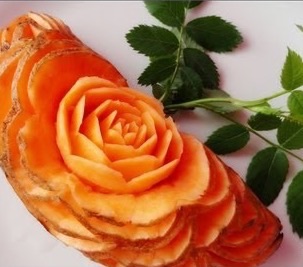Hi everyone, good to see you all again! It’s been a while since I last posted or checked in, but I’m happy to be back for winter break. I’ve been busy with school and a special breeding research project, which is actually the subject of this post. Throughout my breeding adventures, and during my job as LSU’s Ornamental and Specialty Sweetpotato Breeder, I’ve come to realize that it’s good to learn how to hybridize/breed at least 2 different crops.
For example, rose breeders and sweetpotato breeders can learn a lot from each other. Learning how other people do things has only helped my rose breeding skills, ideas, techniques, philosophies, etc. How specifically? Well regular “for food” sweetpotato breeders and ornamental sweetpotato breeders don’t exactly get along or see eye-to-eye, in the same way that a someone breeding for exhibition or florist hybrid teas, probably wouldn’t have many breeding goals in common with someone say, breeding for disease resistant shrub roses.
As such, it’s not surprising that regular commercial grade edible sweetpotatoes are never crossed with their ornamental foliaged, tiny (if any) starchy storage root producing brethren. Similar scenarios have happened much more often in the rose world. Yet when mitigated by trait introgression and crossing of diverse germplasm, has yielded positive results. Examples include David Austin, Ralph Moore, Dr. Basye, etc you know what I mean…
Finally, few of years ago when I started working for the sweetpotato breeding program, I ventured into seeing what would happen if this mentality was applied to the world of sweetpotatoes. I’m excited, proud, and humbled, to share with everyone the results of my work. Keep in mind just as with roses, I am merely standing on the shoulders of giants who came before me, and had the privilege of working with germplasm that has been in development for decades and even generations! Either way, I hope you check out the link and enjoy the video!
http://www.lsu.edu/agriculture/frontpagelinks/Barocco.php
-Andrew
P.S. Here’s a fun picture (not taken by me, but a symbollic image of my philosophy)
